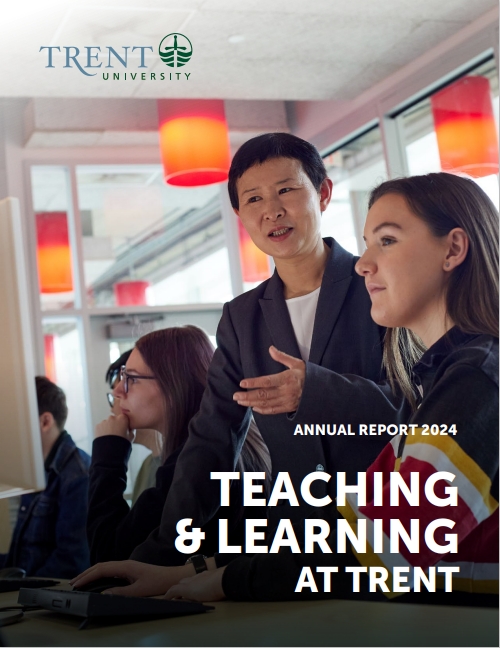As universities move away from pandemic-driven, fully remote course delivery, many instructors are considering what delivery format will best suit their course objectives. Below, you’ll find a description of recommended delivery options, when they’re best used, and what their potential challenges are. Please note that the outlined options are not comprehensive; this document doesn’t, for example, outline what is sometimes called “hyflex” or “flexible” delivery, where students choose a path in a course (online or in-person) or students can switch from one mode to another – but faculty teach both versions at the same time.
It’s also worth noting that there is some confusion in the terminology; “hybrid” and “blended” are used interchangeably in popular, edtech industry, and academic situations.1 Further, many secondary school boards in Ontario (and the media outlets that describe them) use the term “hybrid” to describe “hyflex” delivery formats. We hope the descriptions below can provide some clarity about different delivery formats at Trent and provide guidance for instructors as they consider the optimal delivery format for their course.
In-person / classroom
Hybrid
Remote
Online
In-person / classroom
Description
Students and instructors gather in the same physical location, at the same time each week over the course of the term.
Best used when:
- subject matter is aligned with kinesthetic objectives, requires rapid clarification from the instructor, or is emotionally challenging and requires nuance and instructor support.
- collaboration (between students or the instructor) is frequent or required.
- students would benefit from hands-on activities such as lab exercises, clinical practice, or work with artifacts.
Challenges
- This delivery method serves only students who can make it to a physical campus.
- This delivery method doesn’t usually serve the needs of students who are interested in the convenience of some learning technologies.
Variations
Lecture and seminars of varying and conventional lengths, already offered by the Registrar and selected during the development of departmental staffing plans; some minor use of learning technologies might occur in variations for activities or assessments.
Hybrid
Description
Online activities (likely asynchronous) are mixed with in-person (synchronous) meetings; both online and in-person activities are significant portions of the course.
Best used when:
- students are able to learn material on their own, and would benefit from meeting to consolidate or apply learning.
- students need some flexibility to learn on their own or can’t make it to campus regularly.
- students need to learn digital skills as part of the course.
- space on campus is limited.
Challenges
- Instructors need to ensure that workload is similar to conventional in-person courses.
- Instructors need to understand and know how to use various technologies, ensuring proper design and navigation.
- Students need access to and familiarity with technology.
Variations
Flipped Classroom: asynchronous lectures, podcasts, and activities are mixed with weekly in-person meetings in which students engage in active learning through small group tutorials, workshops, or lab sections.
Rotational Model: asynchronous activities + occasional (but regular) in-person meetings (once every two or three weeks); to make this format effective, occasional in-person meeting should be relatively small, possibly the size of a seminar or lab; seminar or lab should run up to 2 hours
Remote
Description
All the learning takes place online; while students do the readings (or watch videos or listen to podcasts) on their own, they may have synchronous meetings (in large and/or small groups).
Best used when:
- instructors are familiar with learning technologies.
- students are already comfortable with online learning.
- students need some flexibility to learn on their own or can’t make it to campus regularly.
- courses need to pivot quickly from in-person formats.
- space on campus is limited.
Challenges
Large classes are difficult for synchronous online meetings; the class itself needs to be well-structured – and instructors need to be used to teaching to students whose cameras are turned off.
Variations
Asynchronous learning activities + smaller and required synchronous meetings; smaller (seminar-sized meetings would be best).
Online
Description
All the learning takes place online, with all required activities happening asynchronously.
Best used when:
- instructors are familiar with learning technologies.
- instructors are able to engage students in video-, audio-, or text-based formats.
- instructors have marking support (to give timely feedback on assessments, especially since this is a key method of instructor-student communication).
- students self-direct and self-regulate well.
- students need some flexibility in scheduling or can’t make it to campus regularly.
- space on campus is limited.
Challenges
- Engagement can be difficult with large asynchronous classes; sometimes students feel disconnected from the instructor and from other students.
- Workload needs to be monitored closely; the tendency is to assign more work than expected or required.
Variations
Asynchronous learning activities + weekly optional seminars (which are recorded).
Resources
Irvine, Valerie. “The Landscape of Merging Modalities.” 26 October 2020. https://er.educause.edu/articles/2020/10/the-landscape-of-merging-modalities
McMurtry, Beth. “Teaching: Why the Term ‘Hybrid’ Class Continues to Confuse.” 18 February 2021. https://er.educause.edu/articles/2020/10/the-landscape-of-merging-modalities
1Valerie Irvine’s “The Landscape of Merging Modalities” acknowledges this confusion -- and the terms’ interchangeability.


